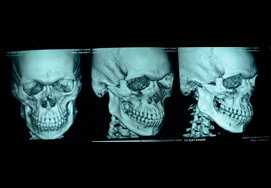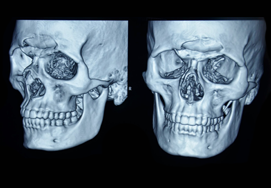Soft Tissue Injuries Of The Face
Individuals who have severe burns, injuries due to motor vehicle accidents, acute or chronic wounds, nerve injury, and soft tissue infections are suitable

- what is Soft tissue injuries ?
- What are the types of the surgeries done by your plastic surgeons?
- Which individuals are suitable for the surgery?
- How should I prepare for the surgery?
- What will happen during your procedure
what is Soft tissue injuries ?
Soft tissue refers to the tissues other than bony skeleton that connect, support, or surrounds other structures and organs of the body which include muscles, tendons, ligaments, fascia, nerves, fibrous tissues, fat, blood vessels, and synovial membranes. The common sites for the soft tissue injuries are face, hands, chest, shoulder, knee, and upper arms.
Soft tissue injuries may be caused by burns and thermal injuries, animal or human bites, falls, effects of radiation, motor vehicle accidents, acute and chronic wounds, violence, and physical abuse, and soft tissue infections.
Soft injuries can range from contusions, abrasions, lacerations, puncture wounds, avulsions, which can involve the deeper structures like muscle, tendon, nerves and vessels .
Introduction
Surgical repair of soft tissue injuries is a specialized work and requires the skill of the plastic surgeon to do a proper repair of all the injured structures. Plastic and reconstructive surgeons have the unique skill set to do justice to these injuries. In fact, no other speciality is trained specifically to treat soft tissue injuries. Surgical interventions required for management of soft tissue injuries are best done by plastic and reconstructive surgeons.
What are the types of the surgeries done by your plastic surgeons?
- Facial soft tissue injuries – require careful repair of all injured structures to allow proper healing Facial lacerations – precision repair
- Facial friction burns – debridement and collagen sheet application
- Soft tissue injures associated with Facial fractures – precise reduction of fractures of face and management of all soft tissue injuries
- Management of frontal nasal bone fracture , cheek bone fractures, lower and upper jaw fractures, right from time of injury to discharge
- Soft tissue loss – right from skin grafting to soft tissue reconstruction with local and distant flaps
- Hand and foot injuries which require repair of delicate tendons, nerves, vessels, reduction and fixation of fractures and soft tissue reconstruction.
- Repair of scalp injuries due to various reasons including trauma, burns , infection.
- Prevention and Repair of pressure ulcers or Decubitus ulcers or pressure ulcer
Which individuals are suitable for the surgery?
All individuals from newborn child to aged adult can benefit by plastic surgery management of soft tissues. Individuals who have severe burns, injuries due to motor vehicle accidents, acute or chronic wounds, nerve injury, and soft tissue infections are suitable for the surgery.
How should I prepare for the surgery?
Before the surgery, you should:
- you will be investigated with blood and urine workup, radiographs, ECG ,
- Anaesthetist will evaluate you and may get further testing.
- All necessary scans would be done as deemed fit.
- Informed Consent for surgery would require to be signed
- You will have to be nil by mouth for a period of 4 to 6 hours prior to surgery
What will happen during your procedure
Anaesthesia will be given to keep you comfortable.
All wound would undergo surgical debridement – which is the most important step In management of all these injuries , which is done under magnification, which involves removal of all dead , devitalized tissues, removal of foreign bodies, dirt, sand and all contaminants. Wash with copious amounts of saline and peroxide
Precise repair of injured structures will be done under magnification with precision instruments according to the nature of your injuries. If hand, facial or foot fracture are present – They will be reduced and fixed with plates and screws or Multiple K wires or Lag screws as required.
If injuries to nerves and vessels are present – they will be repaired using advanced microsurgical technique to allow restoration of circulation, restoration of sensation and motor movements.
If tendons are injured then they will be repaired. If muscles , soft tissues are injured they will be repaired
If soft tissue loss is present, then let the surgeon will decide what is best for you. Loss of soft tissue without exposure of vital structures like tendons, nerves, vessels, and bone can be managed with skin grafting. Loss of soft tissue with exposure of vital structures will require flap coverage in form of flaps.
It is important to remember that we are all working for your benefit and your benefit is what we want.
Postoperative care
Your surgeon will instruct you on what is required.
- You require to follow-up regularly with the surgeon.
- Avoid direct sunlight on area which are injured to avoid hyper pigmentation
- You may be required to massage suture lines in order to promote early maturation.
- You may be required to massage skin graft and flap areas









